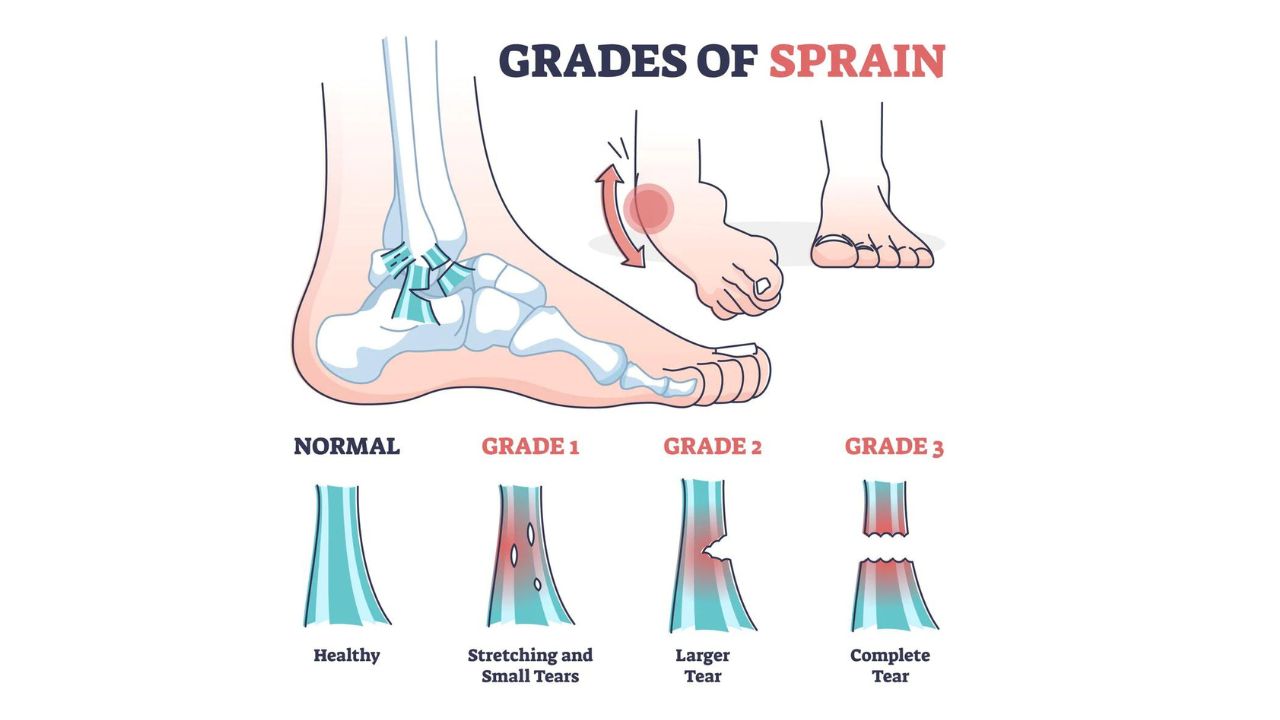
Ankle Sprain Treatment
What Is an Ankle Sprain?
An ankle sprain occurs when the ankle twists, turns, or rolls beyond its normal range of motion, causing damage to the ligaments that stabilize the joint. This common injury often affects the ligaments on the outside of the ankle, leading to pain, swelling, and restricted movement. Severity varies from mild strains to severe tears.
Symptoms of an Ankle Sprain
Symptoms typically include:
- Bruising and Swelling: Common around the ankle joint.
- Reduced Flexibility: Difficulty in moving the ankle through its full range of motion.
- Pain: Particularly when bearing weight or moving the ankle.
- Difficulty Bearing Weight: Pain often worsens when trying to walk or stand on the affected foot.
Causes of Ankle Sprains
Ankle sprains often result from:
- Falling: Especially from a height or onto an uneven surface.
- Running or Walking on Unlevel Ground: Increasing the risk of sudden twists.
- Jumping and Landing: Landing at an odd angle can strain the ankle.
- Sports Activities: Sports that involve running, jumping, or quick changes in direction, especially on uneven ground or with inadequate footwear.
Risk Factors
Certain conditions increase the risk of an ankle sprain:
- Sports Participation: Activities requiring frequent ankle twists, such as basketball or soccer.
- Obesity: Excess weight can place additional stress on the ankle joint.
- Uneven Terrain: Walking or running on rough surfaces increases the likelihood of injury.
Prevention Tips
To minimize the risk of an ankle sprain:
- Exercise Caution: Be careful when walking on icy or uneven surfaces.
- Warm-Up: Always warm up before engaging in physical activities to prepare the muscles and ligaments.
- Avoid High Heels: Opt for stable, supportive footwear instead of high heels.
- Wear Proper Footwear: Use shoes appropriate for the activity you are performing.
- Strengthen Muscles: Regularly engage in exercises that enhance muscle strength and flexibility to support the ankle.
Ankle Sprain Treatment
Immediate treatment often involves the R.I.C.E. method:
- Rest: Avoid putting weight on the injured ankle.
- Ice: Apply ice packs to reduce swelling and numb the pain.
- Compression: Use an elastic bandage to control swelling.
- Elevation: Keep the ankle elevated above heart level to reduce swelling.
For severe sprains, seek medical attention. A healthcare professional might recommend physical therapy, immobilization with a brace, or, in rare cases, surgery if the ligaments are severely torn.
Proper treatment and care can prevent long-term complications and facilitate a faster recovery, allowing individuals to return to their regular activities with minimal discomfort.




